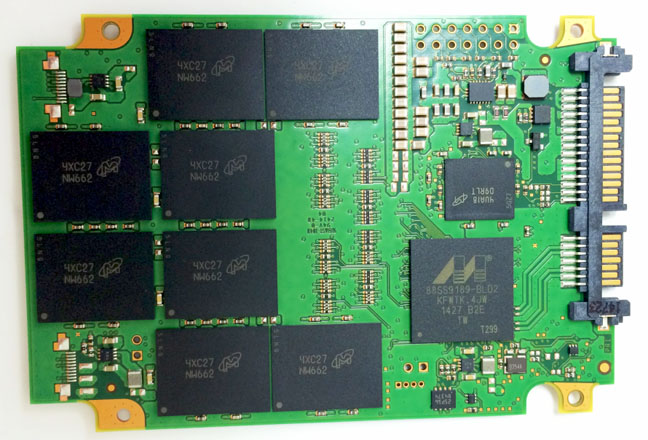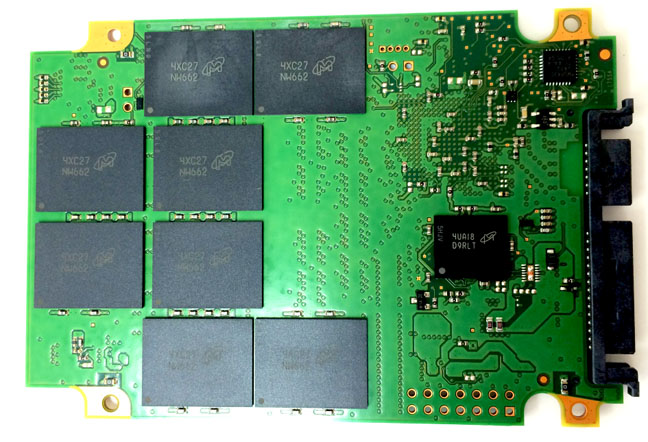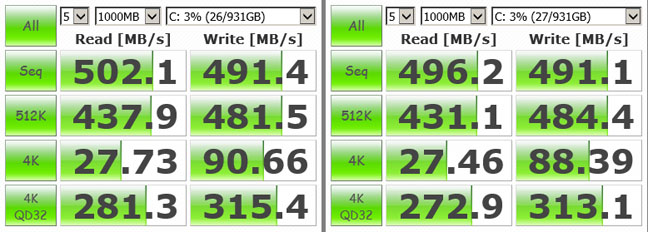This article is more than 1 year old
Business or pleasure? Crucial MX200 and BX100 1TB SSDs
Take your pick, and don't worry about the price tag
DWA – under the hood
So, what does the MX200 give you for that extra £50 over the BX100? All the usual bells and whistles that normally make up the feature list of a Crucial drive are back; DevSleep, hardware encryption and eDrive support, adaptive thermal protection, RAIN technology and suchlike, together with some pretty stunning endurance figures and, for some drives in the range at least, a new write acceleration technology.

MX200 2.5in SSD PCB top
Internally, the MX200 uses the same NAND/controller combo as the MX100, namely a Marvell 88SS9189 eight-channel controller and Micron 16nm synchronous MLC NAND with a cache chip(s) running at 533MHz. Crucial gives sequential read/write figures for all formats and capacities across the range of 555MB/s and 500MB/s respectively.
DWA is not some radical hip-hop band but Crucial’s new Dynamic Write Acceleration technology. In short, DWA works like a dedicated SLC NAND cache but, and this is the important bit, the part of the MLC NAND used to switch to SLC NAND isn’t fixed. Any part of the MLC NAND can be switched to SLC mode and back again on the fly.

MX200 PCB bottom
The firmware can dynamically adjust how and where the new writes are performed – think of it as a SLC cache that can change both its size and where it sits in the SSD depending on what’s being written and how full the drive is. The data is then transferred to the MLC NAND during idle time. The technology is not only enabled on the 250GB 2.5in drive but on both capacities of the mSATA and M.2 formats.
Given that the drive uses the same NAND and controller as the MX100, you might think that the people in white coats at Crucial might just have sat on their laurels and not bothered to improve things. Not a bit of it. With the experience gained the first time around with the MX100, they have got into the nitty-gritty of the firmware to improve things.

CrystalDiskMark results for default (left) and compressible data (right)
The most notable difference is that the write technologies in the firmware have been tweaked in such a way that the endurance figures of the MX200 completely eclipse the MX100. The 1TB MX200 drive has a TBW figure of 320TB, the equivalent to 175GB of writes per day for five years.
Yet to see the leap that the tinkering in the firmware has provided, you need to drop down to 500/512GB capacity range to compare the previous MX100 to the new drive. The 512GB MX100 has a TBW figure of 72TB (equivalent to 40GB of writes per day for five years), in contrast the 500GB MX200 has over double this, 160TB TBW which works out as 87GB of writes in five years.
